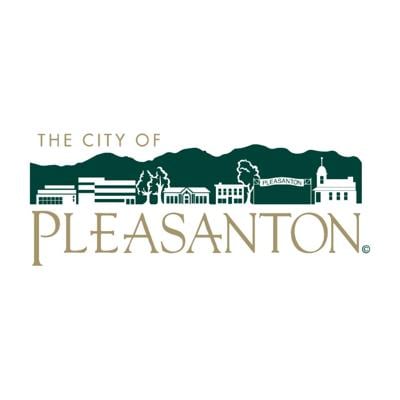PLEASANTON — The city council last week formally invited the public to submit suggestions for drawing the city’s first maps for district elections, a process that each panel member said they wished was not taking place.
The process, which will continue with public hearings through February, will divide the city into four council districts. Residents from each area will elect an individual representative. The change, precipitated by the threat of a lawsuit alleging that at-large elections violate California’s Voting Rights Act of 2001, will begin with the November 2022 election. Voters will shift from voting for all council members to choosing a single representative who lives in their district. All residents will continue to elect the mayor to fill out the five-member panel.
Livermore moved to district elections in 2020 for the same reason.
“It doesn’t seem logical,” Vice Mayor Julie Testa said during the Jan. 4 Pleasanton City Council meeting, where a demographer and two attorneys explained the process going forward. “It seems like an unnecessary project … This was predatory litigation against the city — against every city in California — and it really was not a choice that we made.”
Livermore, along with the Dublin and Pleasanton school districts, also will be drawing district lines in the coming weeks. Federal and state law requires district boundaries be drawn and adjusted every 10 years following the U.S. Census count, which occurred in 2020.
Pleasanton City Council voted in September to drop at-large voting after Malibu attorney Kevin Shenkman threatened to sue the city. Shenkman alleged in a letter that the at-large electoral system violated the California Voting Rights Act. Shenkman, who has threatened to sue numerous cities throughout California, contends the state’s Voting Rights Act requires cities to switch to district elections when there are underrepresented minorities.
He is engaged in a lengthy court confrontation with the City of Santa Monica, which chose to fight the change. Pleasanton’s attorneys told the council that Santa Monica has spent more than $22 million so far in the battle.
Instead of spending that money and likely losing, Pleasanton’s leadership and attorneys said they chose to transition to the new system, even though they would have liked to fight.
“I didn’t like this when we had to vote for this in September,” Councilmember Kathy Narum said. “I haven’t seen anything or learned anything that makes me like it any better than I did then. I just feel like we were kind of being stuck by an attorney to get this done. I feel it’s kind of unfortunate.”
To get the process rolling, demographer Michael Wagaman of Wagaman Strategies, provided the council with an overview of the process, which will include another public hearing on Jan. 18. In the meantime, the council wants residents to submit recommendations and suggested district maps on the city’s website. Wagaman’s firm will use the information, as well as voiced comments during that meeting, to create proposed maps that will be discussed and updated during meetings on Feb. 3 and Feb. 24.
Wagaman said the council must follow federal and state guidelines in drawing the boundaries. Beyond creating four districts with similar-sized populations of about 20,000, the districts must be contiguous, use main streets and identifiable locations for understandable boundaries, consider races within the population, and identify ‘communities of interest,’ which are areas that will be determined to have similar social and economic interests including language, shopping centers, housing and schools.
Each of the five council members said they preferred representing all residents, not just those in one area. Councilmembers must live in the district he or she represents, so the possibility exists that when the new lines are drawn, some current members could find themselves squaring off for the same seat.
Councilmember Jack Balch said he had heard from residents who are not pleased with the change. He called it ‘a great honor’ to be elected by residents from throughout the city, but said he understood why some voters prefer voting for an individual representative who lives in their community.
Councilmembers voiced concern that future members might put their district’s concerns over what’s good for the whole city. But that has been Shenkman’s point in the decade since he has been trying to alter voting in the state.
Mayor Karla Brown, who will avoid district elections if she runs for reelection in 2024, called it frustrating for an elected official to run with a focus only on one district where they obtain votes. She said she expects candidates will continue to campaign all over the city because “you don’t represent one quarter of Pleasanton.”
“We all represent the entire city,” Brown said. “We all need to be experts in the entire city … So. it is challenging, but we are back to the wall (and) don’t have a lot of choices … We’re not going to be frivolous with taxpayer dollars in a very unlikely litigation.”
Balch said councilmembers should still treat the city as one.
“I challenge our future elected district representatives to think of the city’s heart as a whole,” Balch said.
For more on redistricting and to take part, visit bit.ly/3zsd47M.
In other action, the city council altered part of its parklet plan to replace makeshift outdoor eating areas created on downtown sidewalks and parking areas during the COVID-19 pandemic. Approved in December, the plan will continue to allow pre-approved new parklets to go up March 1. A city designed kit will become available for April 1.
Although Testa expressed concern that restaurants were required to remove the so-called pop-ups by Jan. 7, just as COVID-19 began another surge, her fellow colleagues agreed that the city needed to clean the streets and that more aesthetic parklets should be constructed.
In the latest vote, the council agreed to make outdoor eating — available in areas formerly set for street parking — 8-feet-wide, not 7.5 as in their previous vote.



